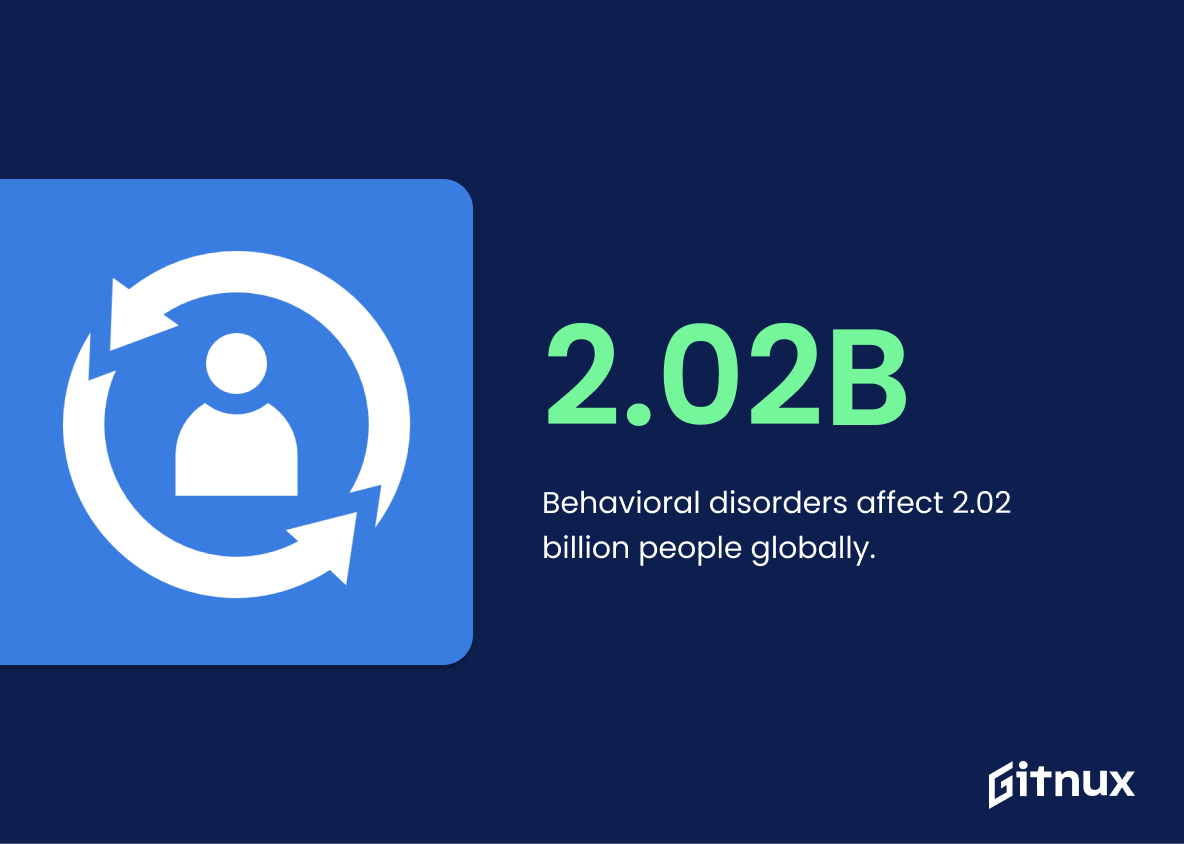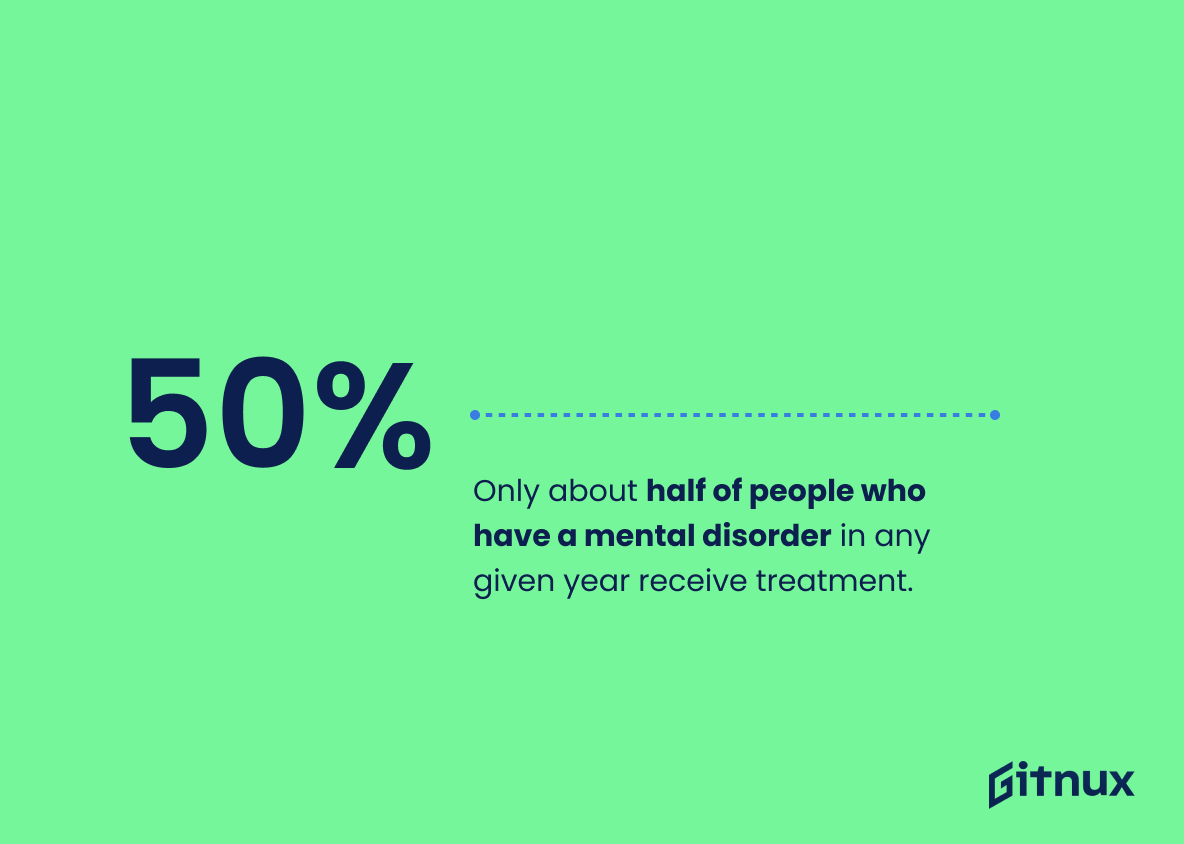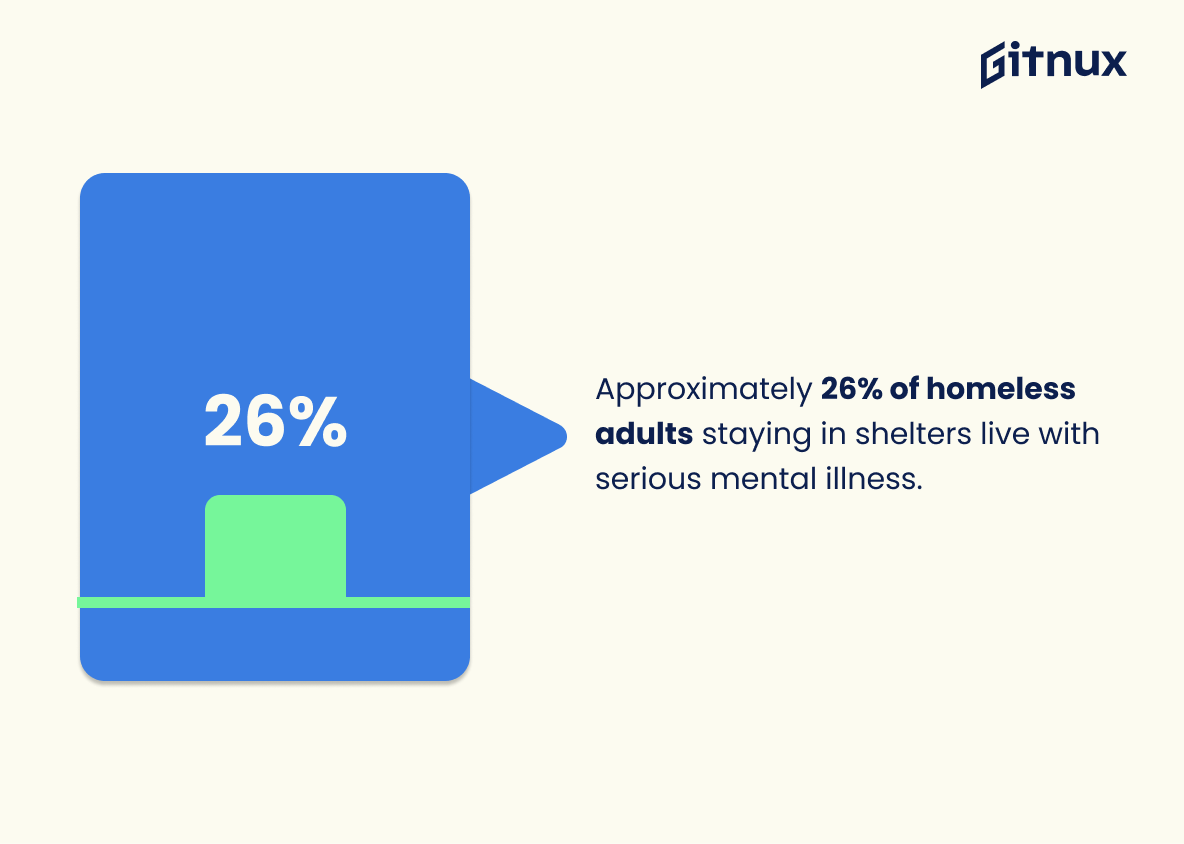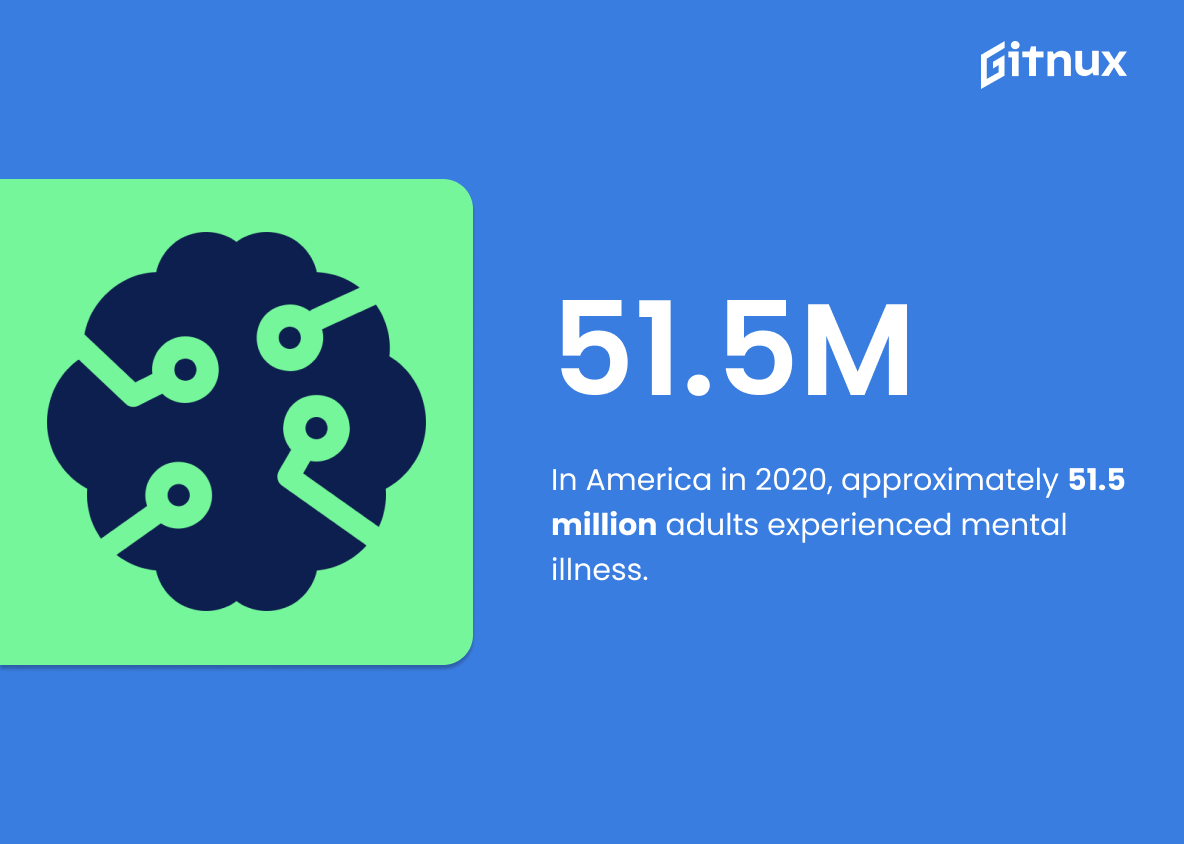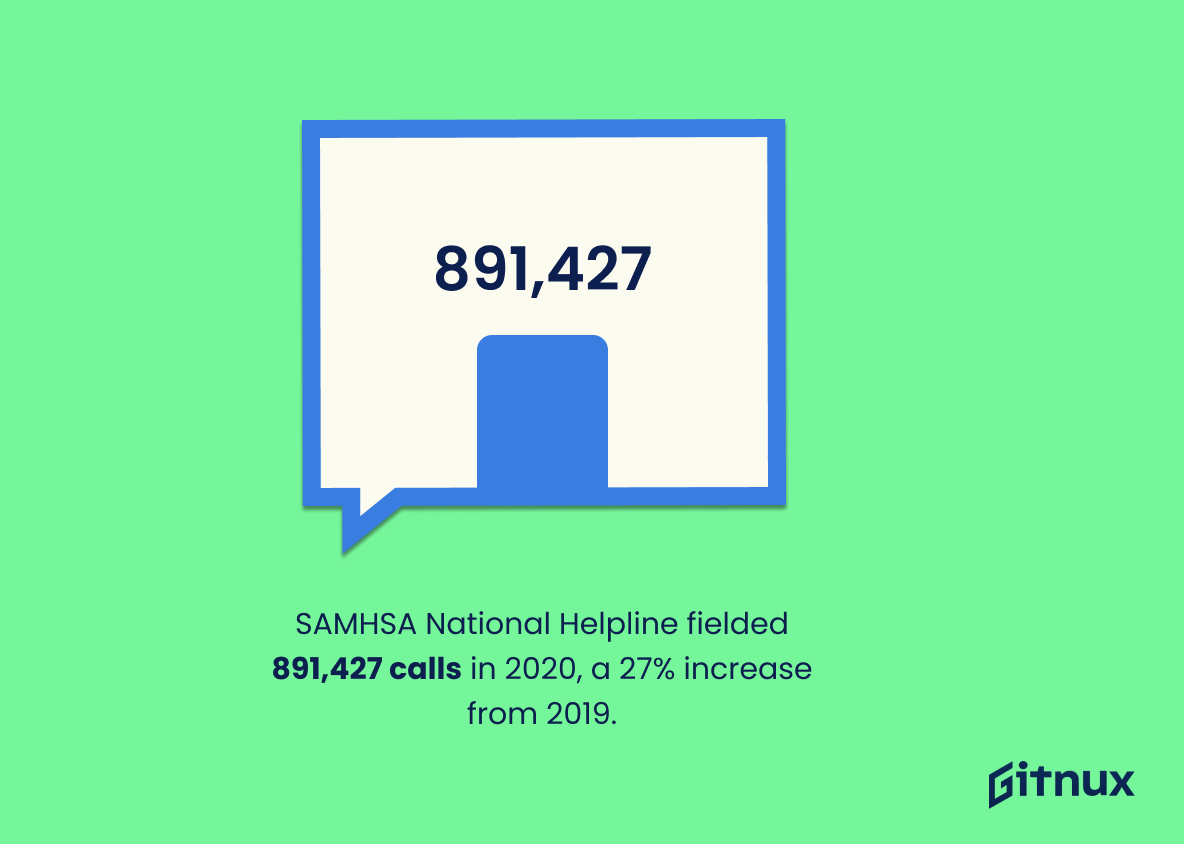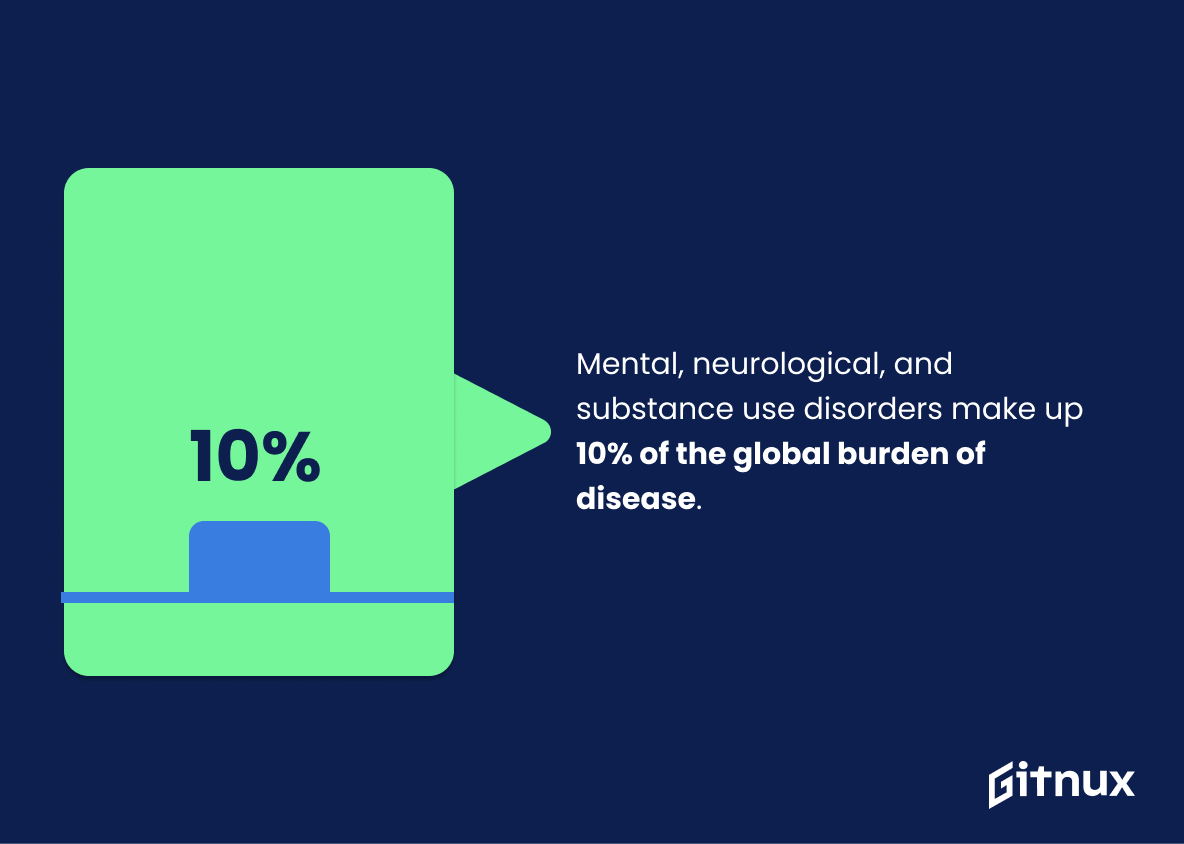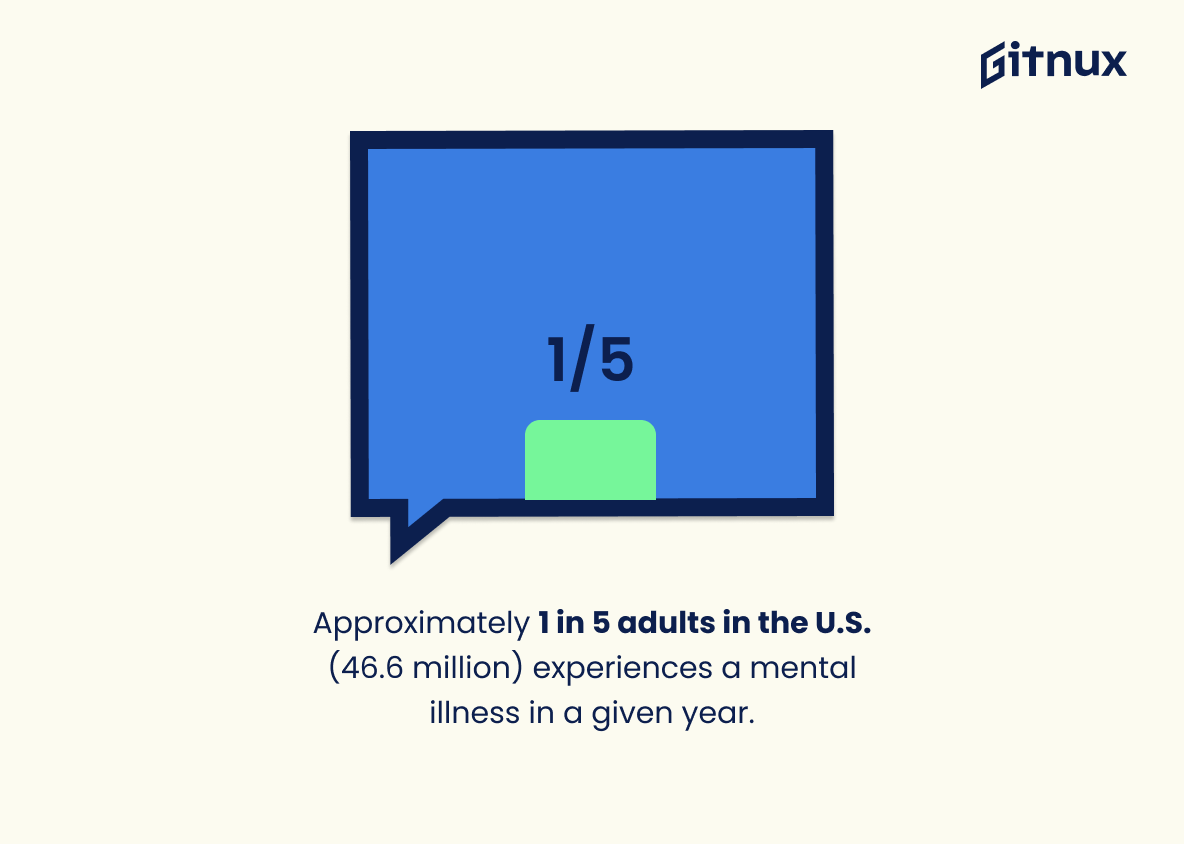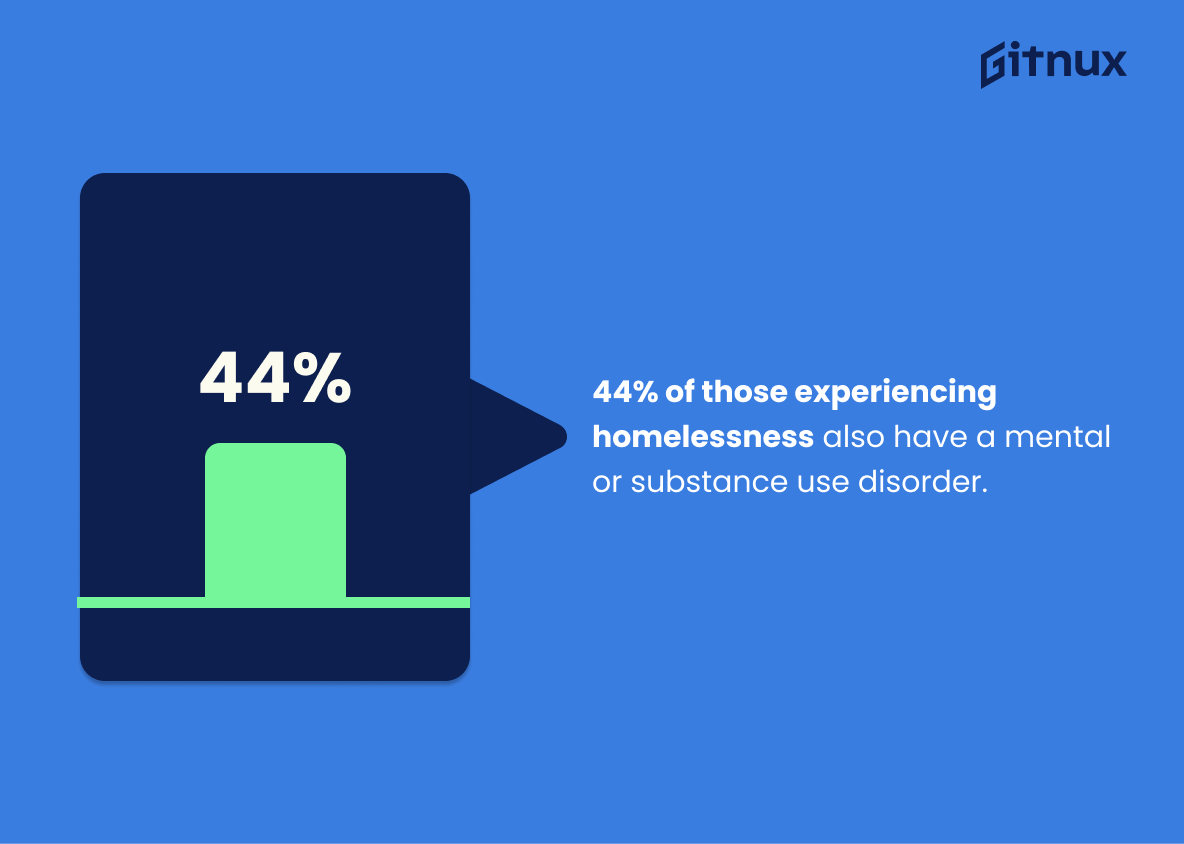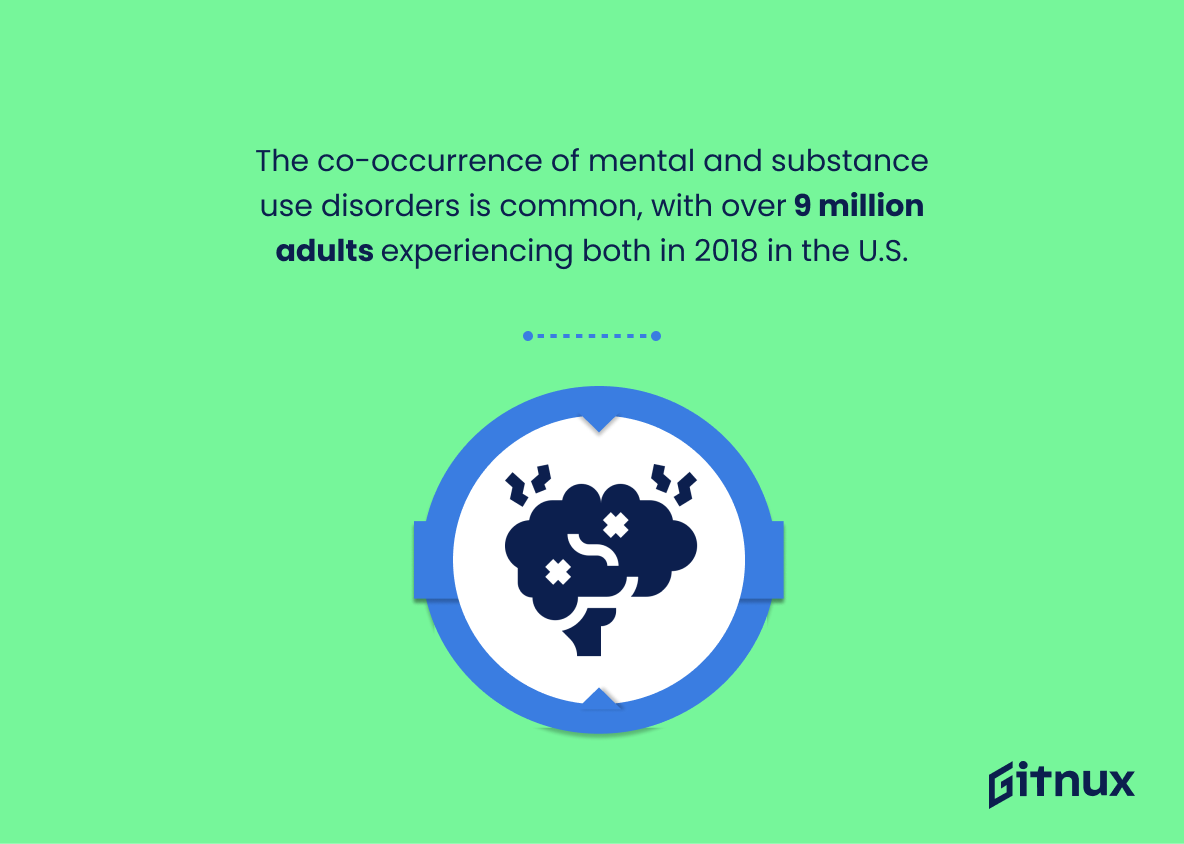In recent years, the behavioral health industry has grown exponentially. With the increasing awareness and understanding of mental health, this sector is undoubtedly seeing significant changes that are reshaping its landscape. This blog post will delve into some of the most compelling statistics and insights within the behavioral health industry, proof of its progress and evolving dynamics.
With figures addressing everything from the rising prevalence of mental health disorders to the expanding market for digital therapeutic solutions, we extend an enlightening exploration into this pivotal component of our healthcare system. Stay with us as we unlock data analytics, trends, and key statistics that will not only inform you but also help adjust the lens through which we look at this critical industry.
The Latest Behavioral Health Industry Statistics Unveiled
Behavioral disorders affect 2.02 billion people globally.
Illuminating the extent of the global behavioral health crisis, the staggering figure of 2.02 billion people affected by behavioral disorders offers a potent testament to the widespread reach and impact of these issues. This statistic is a powerful reminder for stakeholders and readers alike about the sheer scale of the tasks confronting the behavioral health industry. It emphasizes the urgent calls for concerted and innovative strategies to address the epidemic.
It underscores the collective human and economic toll behavioral disorders impose, validating the critical need for continued investment, research, and improvement in behavioral health services. This figure establishes the importance of the behavioral health industry, challenging it to rise to the demands of billions, thereby influencing policy decisions, intervention strategies, service provisions, and ultimately, the lives impacted by behavioral disorders.
The global behavioral health market is projected to reach $240.8 billion by 2026.
The projected rise of the global behavioral health market to a staggering $240.8 billion by 2026 paints a vibrant and promising landscape for this industry. This pivotal financial projection showcases an impending industry boom, embodying the increasing necessity and demand for behavioral health services across the globe. Not only this, it echoes the shifting societal attitudes towards mental health, emphasizing a growing recognition and prioritization of such concerns.
This significant growth also forecasts lucrative opportunities for investing, thus making this an advantageous time for players eyeing to enter or expand in this specific market. Hence, this statistic marks a trail of possibilities, expeditions, and evolution for the behavioral health industry, making it an integral touchstone in the discussion of Behavioral Health Industry Statistics.
Only about half of people who have a mental disorder in any given year receive treatment.
Highlighting the statistic—’only about half of people who have a mental disorder in any given year receive treatment’—paints a vivid picture of the behavioral health industry. It conversely illuminates the fact that nearly half of all individuals afflicted with mental health disorders are not receiving the care they critically need, which could be due to various impediments such as stigma, lack of accessibility, or the cost of treatment.
This data point is a compelling spotlight on the existing gaps in the industry’s service delivery, throwing into sharp relief the urgent call-to-action needed to bridge these gaps. It beckons for increased affordability, accessibility, and acceptance of treatment, urging players in the sector to innovate, educate, and advocate more effectively.
Moreover, it underscores the extensive market potential waiting to be untapped for the industry, while simultaneously representing a societal challenge of considerable magnitude. Stressed within a blog post, this statistic could stimulate thought-provoking dialogue on how the behavioral health industry must evolve to better serve the untapped half.
Approximately 26% of homeless adults staying in shelters live with serious mental illness.
The statistic, noting that an estimated 26% of homeless adults residing in shelters suffer from severe mental illnesses, cements the idea that mental health problems are prevalent in marginalized communities. In a blog post delving into Behavioral Health Industry Statistics, this figure is a poignant reminder of the close connection between mental health and homelessness.
It underscores the critical role that behavioral health services play in addressing the struggles of the homeless community. As an industry, it’s a call to action to enrich our efforts in providing mental health support to these vulnerable populations, laying a productive foundation for society.
About 64.1% of youth with major depression do not receive any mental health treatment.
Shining a spotlight on this particularly disheartening statistic reveals a dire, but hidden, reality in the Behavioral Health Industry. Youth constituting almost two-thirds (64.1%) who struggle with major depressive disorders are left untreated, drifting in the treacherous waters of mental health challenges without a lifeline. This statistic amplifies the urgency for accessible and effective mental healthcare interventions tailored toward the youth demographic. It underscores the importance in not only identifying and recognizing such disorders, but also closing the vast chasm that stands between our youth and necessary mental health treatment.
In America in 2020, approximately 51.5 million adults experienced mental illness.
In the vast expanse of America’s population, the statistics unveil a pressing concern – roughly 51.5 million adults were ensnared by the complexities of mental illness in 2020. The relevance of this fact in the context of a blog post about Behavioral Health Industry Statistics cannot be overstated. Picture this: the number of affected individuals isn’t a mere drop in the ocean. Rather, it forms a substantial part of the fabric of our society, painting a vivid image of the demand, scope, and needs in the behavioral health industry.
This shocking figure not only underscores the grim reality of mental health issues in society but also highlights the critical necessity for efficient services, interventions, and policies. With such a colossal tally, the behavioral health industry must be agile, prepared, and equipped to address these crucial demands. This in turn, provides valuable insights to investors, healthcare providers, and policymakers in shaping economically viable, socially responsible, and psychologically supportive strategies for overall wellness. Therefore, this statistic serves as the beacon to guide both the present and future decisions and endeavors of the behavioral health industry.
Substance Abuse and Mental Health Services Administration’s (SAMHSA) National Helpline fielded 891,427 calls in 2020, a 27% increase from 2019.
Before diving into the depths of the behavioral health industry, it is pivotal to illuminate a significant shift illuminated by the recent stats from the Substance Abuse and Mental Health Services Administration’s (SAMHSA) National Helpline. As the calendar flipped from 2019 to 2020, a rising tide of calls came crashing into the helpline. With 891,427 calls fielded in 2020, that marked a 27% surge from the prior year.
This vivid uptick is a powerful mirror reflecting the intensifying struggles with behavioral health issues among the population, especially in the wake of the global pandemic which took a hefty toll on mental health. The numbers, stark and unyielding, underscore the crucial role of behavioral health services and spotlight the escalating demand for professionals in this field.
The spike not only elevates the conversation on the urgency and primacy of behavioral health, but it also paints a tangible landscape of potential market expansion and the ongoing need for innovative solutions. This trend meandering through the statistics is a call to arms for the behavioral health industry, an impetus for pushing boundaries, pooling resources, and prioritizing better adaptations to the shifting mental health terrain.
The worldwide prevalence of depression is estimated to be 264 million.
Illustrating the magnitude of the global depression burden, the staggering figure of 264 million people permeates a striking awareness of the gravity and pervasiveness of mental health issues. In the context of a blog post about Behavioral Health Industry Statistics, this number serves as a pivotal touchstone. It underscores the pressing need for comprehensive services, innovative interventions, and intensive research within the industry.
It also constitutes a substantial market potential for industry players, and a call to action for policymakers, healthcare providers and stakeholders to strategize solutions to mitigate this significant challenge. Furthermore, it emphasizes the industry’s indispensable role in fostering societal wellbeing and showcases the depth of impact that effective mental health initiatives can have on a significant segment of the global population.
Mental, neurological, and substance use disorders make up 10% of the global burden of disease.
Plunging into the deep waters of behavioral health industry statistics, the significance of ‘mental, neurological, and substance use disorders contributing 10% to the global burden of disease’ cannot be overstated. This solitary statistic unfurls a tapestry of critical implications for the industry. Behavioral health disorders, often shrouded in societal stigma, represent a substantial portion of global disease burden, necessitating an urgent, comprehensive response from the industry.
The influence of this statistic trickles down to the fact that an amplified focus on developing effective treatments and interventions, fostering education, and advocating for these disorders are paramount. It underscores the untapped potential of the market, providing pivotal opportunities for stakeholders to make a meaningful difference. As a mirror to the present, this statistic also reflects the extent to which the collective human experience is painted by the strains of these disorders, establishing a compelling case for the expansion and advancement of services in the behavioral health industry.
By 2028, the digital behavior health market is anticipated to reach $4.31 billion with a compound annual growth rate (CAGR) of 22.5%.
As we dive deep into the critical statistics of the Behavioral Health Industry, the forecasted strength of digital behavior health market is hard to ignore. The anticipated growth to a staggering $4.31 billion by 2028, reflecting a compound annual growth rate of 22.5%, paints a vivid picture of the industry’s potential. This growth trajectory paints a bright future not only for investors but also for those seeking innovative mental health solutions.
Projected advancements like these signal a positive transformation, underscoring how technology is rapidly intertwining with mental health care. It is important to mention these figures – they echo the momentum of digital technology’s role within the behavioral health landscape and underscore the scale of opportunity within the sector.
Over the next five years, the average growth rate of behavioral health software market will be 14.8%.
Imagine the unfolding landscape of the behavioral health industry – technology weaved intricately into its fabric, bringing about groundbreaking transformations. In this narrative, the spotlight is on the projected 14.8% average growth rate of the behavioral health software market in the next five years. This prediction suggests a high-speed trajectory, establishing a compelling testament to the escalating integration of technology into the field of behavioral health.
Thrusting this data point front and center in a blog post discussing behavioral health industry statistics sends a powerful message – an inevitable digital tide is washing over the healthcare industry, altering how care is provided and received. This metamorphosis becomes especially significant considering the pivotal role behavioral health plays in overall wellness. When you consider that these software tools are fostering more efficient workflows, enhancing data tracking, and bolstering case management, this growth statistic reveals an unfolding revolution – the rise of digital power enabling quality care in the behavioral health sector.
Approximately 1 in 5 adults in the U.S. (46.6 million) experiences a mental illness in a given year.
Painting a vivid mental landscape through numbers, the statistic uncovers a profound truth—nearly 1 in 5 adults in the U.S., signifying 46.6 million lives, grapple with mental health issues each year. Imagine if this were a city, it would be the third-largest in the world, surpassing well-known megacities like New York, Mumbai, or Sao Paulo. In the tapestry of a blog post on Behavioral Health Industry Statistics, this thread of data magnifies the sheer magnitude and reach of mental illness across society.
It provides a clear rationale for why the Behavioral Health Industry carries such immense relevance and potential for impact. Just as a lighthouse cuts a path through the fog for ships, this datum highlights the extent and urgency of the need for high-quality services that this industry provides. Also, considering the colossal count of individuals affected, it underscores the vast opportunities this industry has for growth and innovation.
Moreover, it offers a reflective mirror to guide policy, support, investment, and stigma reduction efforts. Rather than an opaque abstraction, it allows us to visualize mental health not as a fringe concern affecting a minority but an integral part of the human experience, impacting a significant proportion of U.S. adults.
Before concluding, let’s keep in mind that behind every number is a human story—of struggles and resilience, of hopes and dreams. Every person included in this statistic is someone’s friend, sibling, parent, or neighbor. Hence, it is not just illuminating the scale of the matter. It touches on the necessary compassion and understanding required in addressing mental health issues, thus shaping the essence of the Behavioral Health Industry.
In this light, this statistic is not just a cold figure—it’s a forceful narrative that drives the Behavioral Health Industry’s ongoing evolution in response to meaningful, widespread needs.
Telehealth use has increased 154% during the last week of March 2020 compared with the same period in 2019 in the US.
In the grand canvas of Behavioral Health Industry Statistics, the remarkable ascent of telehealth use, witnessing a 154% surge during the last week of March 2020 (contrasted with the same 2019 stretch), conveys noteworthy resonance. Not only does this underline a dramatic shift in patient behavior favoring digital health services, but it also marks a potential turning point for how mental and behavioral health care is administered across the United States.
This sea-change, catalyzed by the COVID-19 pandemic, unfolds a critical narrative — that telehealth platforms are rapidly becoming the conduit of choice for patients seeking mental health support, effectively dissolving geographic limitations and minimizing stigma often tied to seeking such support. In essence, this transformational uptick reminisces on the evolving ethos of behavioral health care, promising an era where accessibility and convenience are no longer secondary but integral to care delivery.
44% of those experiencing homelessness also have a mental or substance use disorder.
In the realm of Behavioral Health Industry Statistics, the figure that 44% of individuals experiencing homelessness struggle with a mental or substance use disorder is pivotal. It unveils a compelling intersection between homelessness and mental health, suggesting an intricate web of cause and effect that cannot be overlooked. This statistic injects a sense of urgency into the discussion, underscoring the monumental role of the behavioral health industry in addressing these overlapping social issues.
Furthermore, it highlights the critical need for integration of services – mental health support, substance use treatment, and housing – as a route towards solution. The implications of this statistic stretch far and wide, making it a necessary cornerstone in any effective dialogue about the industry.
The co-occurrence of mental and substance use disorders is common, with over 9 million adults experiencing both in 2018 in the U.S.
Highlighting the intersection of mental and substance use disorders in the U.S adult population paints a vivid picture of the intertwined challenges within the Behavioral Health Industry. The quoting of 9 million adults battling both issues in 2018 underscores the scale and depth of complexities necessitating innovative solutions.
Additionally, it profoundly reflects on the demand for integrated treatment plans that are holistic, addressing both substance use and mental disorders. Finally, it serves as a striking reminder that investing in comprehensive statistical data assessing both conditions together can spur considerable advancements in treatment modalities within the industry.
Among those who died by suicide in 2017, 47% had a diagnosed mental health condition.
Highlighting the statistic – ‘In 2017, 47% of suicide victims had a diagnosed mental health condition’ – underscores a significant relationship between mental health disorders and the increase in suicide rates. This statistic, woven into the fabric of a blog post discussing behavioral health industry statistics, can shed light on gravity and urgency of addressing mental health issues within the healthcare landscape.
This number – close to half – underscores the crucial role the industry plays in identifying, diagnosing, and treating such conditions to ensure suicide prevention, reinforcing the need for improved systems and practices. It can serve as a compelling argument for the implementation of more robust mental health programs, increased funding for mental health research, and the social acceptance of mental health treatment.
Furthermore, focusing on this statistic encourages public awareness around the significance of mental health and the tragic consequence – suicide – that can ensue if these conditions remain unaddressed or untreated. By underlining this, the blog post catalyzes much-needed discourse around mental health, emphasizing its importance in the realm of behavioral health and urging necessary action.
U.S. veterans have a 15% higher risk for mental health and substance use disorders than non-veterans.
Highlighting the statistic about U.S. veterans having a 15% higher risk for mental health and substance use disorders illuminates an often-overlooked facet in the broader tableau of behavioral health industry trends. Veterans, as a demographic group, face unique challenges upon reintegrating into civilian life – a transition that is frequently accompanied by psychological stressors.
This particular statistic underscores the noteworthiness of their increased susceptibility, prompting heedful contemplation about the tailored services needed in the behavioral health sector. The demands and nature of their service may leave them more vulnerable to such disorders, offering an emphatic pointer to industry players about the necessity of creating specialized programs designed to address the mental health needs of veterans. It, therefore, both signifies an alarm bell and voices a call to action, encouraging industry evolution towards more sensitive, holistic, and veteran-focused mental health support.
Moreover, this compelling data point emphasizes the urgent need for investment in research, infrastructure, policy-making, and stigma reduction in the mental health sphere. By not losing sight of this statistic, stakeholders in the behavioral health industry can keep their fingers on the pulse of key sectoral needs, thereby championing the well-being of veterans – an integral part of our societal fabric.
Approximately 20% of state prisoners and 21% of local jail prisoners have a recent history of a mental health condition.
Undoubtedly, these statistics give us an intriguing peek into the interconnections between mental health issues and incarceration. Holding nearly a fifth of state and a fifth of local prisoners that have a recent mental health condition, these figures paint a sobering picture of the gripping influence of mental health disorders within the criminal justice system. Since our discussion is focused on the Behavioral Health Industry, it is vital to note that these facts bring to light the urgent need for mental health services and interventions to be seamlessly integrated into our overall healthcare and justice system.
Furthermore, they highlight the importance of alternative responses to mental health crises that could prevent unnecessary incarceration and the potential exacerbation of these conditions. Thus, they stand as an undeniable call to action for the Behavioral Health Industry, signaling the urgency to develop and implement effective treatments and preventative strategies.
Conclusion
The behavioral health industry plays a crucial role in society, significantly impacting both personal lives and public health. The rapid expansion and evolving statistics of this industry reflect the growing awareness and acceptance of mental health issues. Key industry trends suggest an increased focus on telehealth, integration of behavioral health in overall health management, and potential growth opportunities for practitioners.
A deep understanding of these statistics is vital for making informed decisions and keeping pace with this dynamic, important field of healthcare. As a society, the more we comprehend the nuances of this continually evolving industry, the better we can serve and support those who benefit from its care.
References
0. – https://www.www.nimh.nih.gov
1. – https://www.www.bjs.gov
2. – https://www.www.gminsights.com
3. – https://www.www.nami.org
4. – https://www.www.samhsa.gov
5. – https://www.www.cdc.gov
6. – https://www.www.mhanational.org
7. – https://www.www.who.int
8. – https://www.www.healthdatamanagement.com
9. – https://www.www.ncbi.nlm.nih.gov
10. – https://www.www.reportlinker.com
11. – https://www.www.mentalhealth.va.gov
12. – https://www.www.fortunebusinessinsights.com
13. – https://www.medicine.wustl.edu
